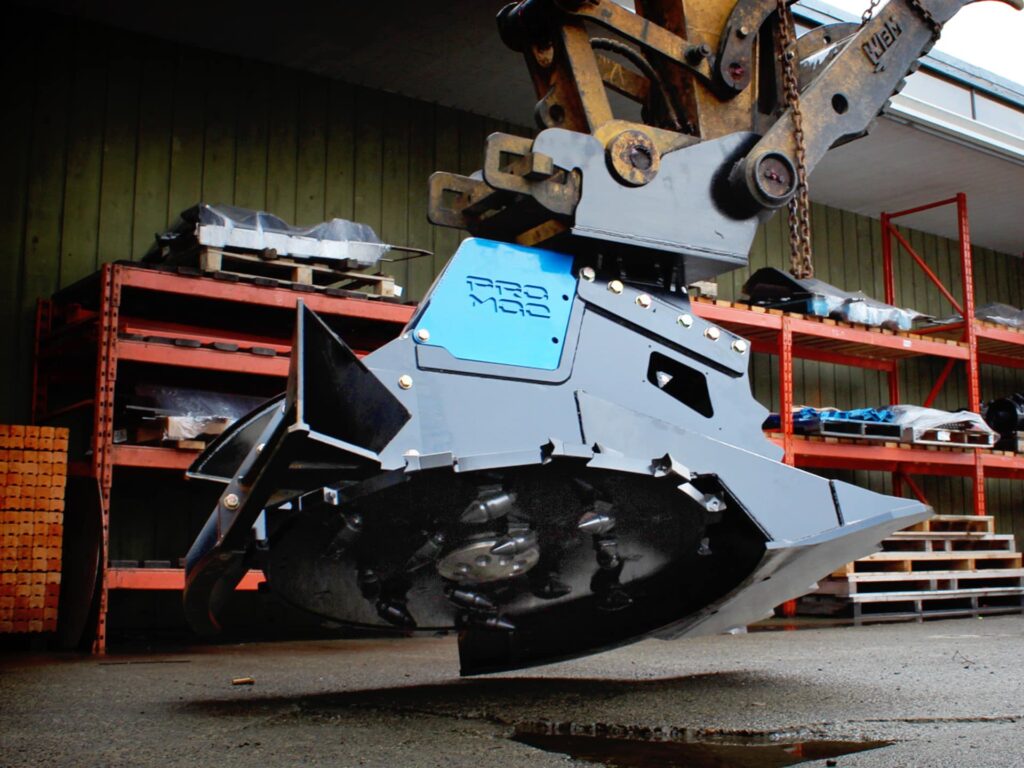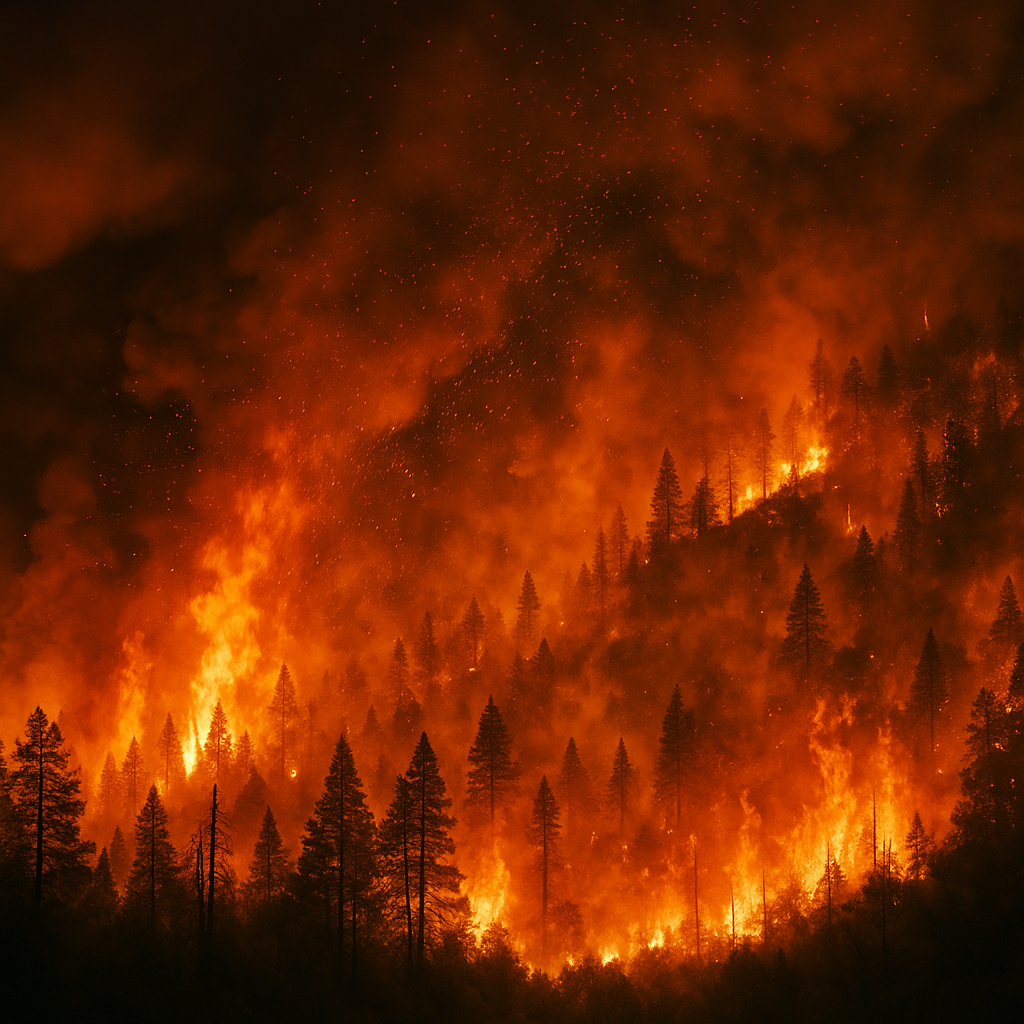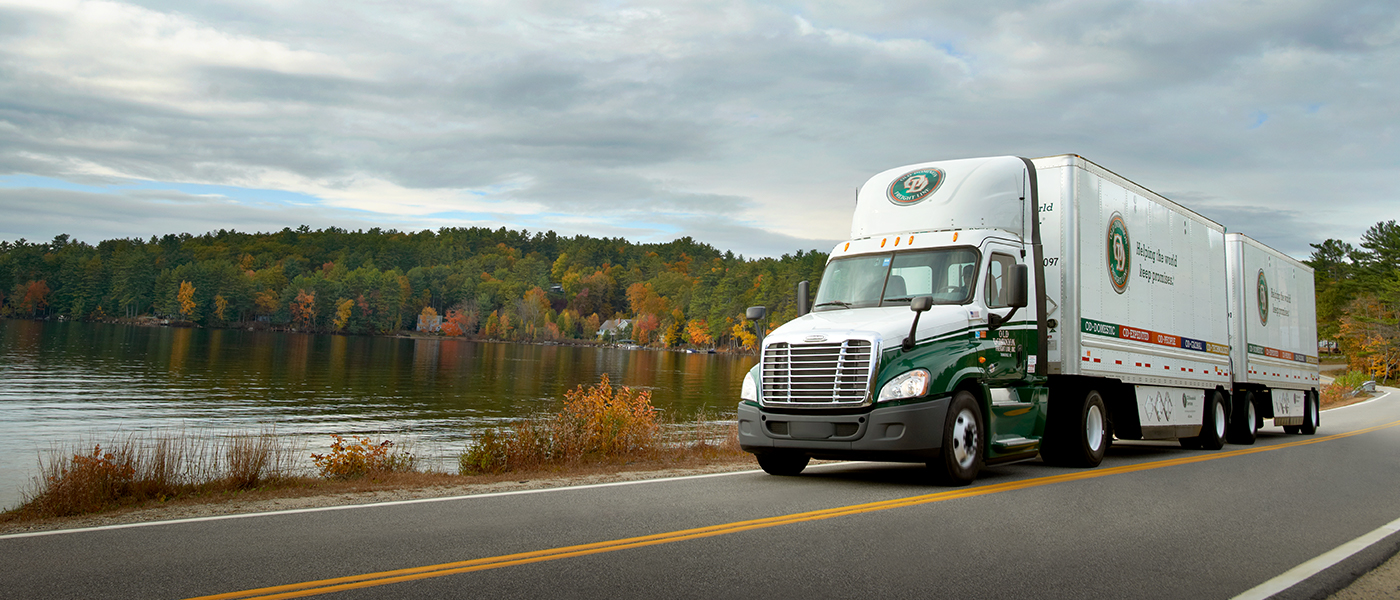Across the U.S. and beyond, the fight against catastrophic wildfires is changing, and the machines doing the work are changing with it. From government-led fuel reduction programs to large private land projects, prevention now relies on powerful, efficient tools capable of reshaping landscapes without destroying them. Among all wildfire mitigation methods, one stands out as the new industry leader: mastication.
Wildfire Mitigation at Scale
The cost of large-scale wildfires in property, human life, and ecosystem loss has skyrocketed over the past two decades. Preventing them isn’t as simple as cutting trees or burning brush; it requires carefully balancing speed, cost, and environmental responsibility.
Today, four main methods dominate large-scale wildfire mitigation efforts: dozer plowing and chaining, controlled burns, hand crews, and mastication (mechanical mulching). Each plays a role, but only one offers a scalable, sustainable path forward.
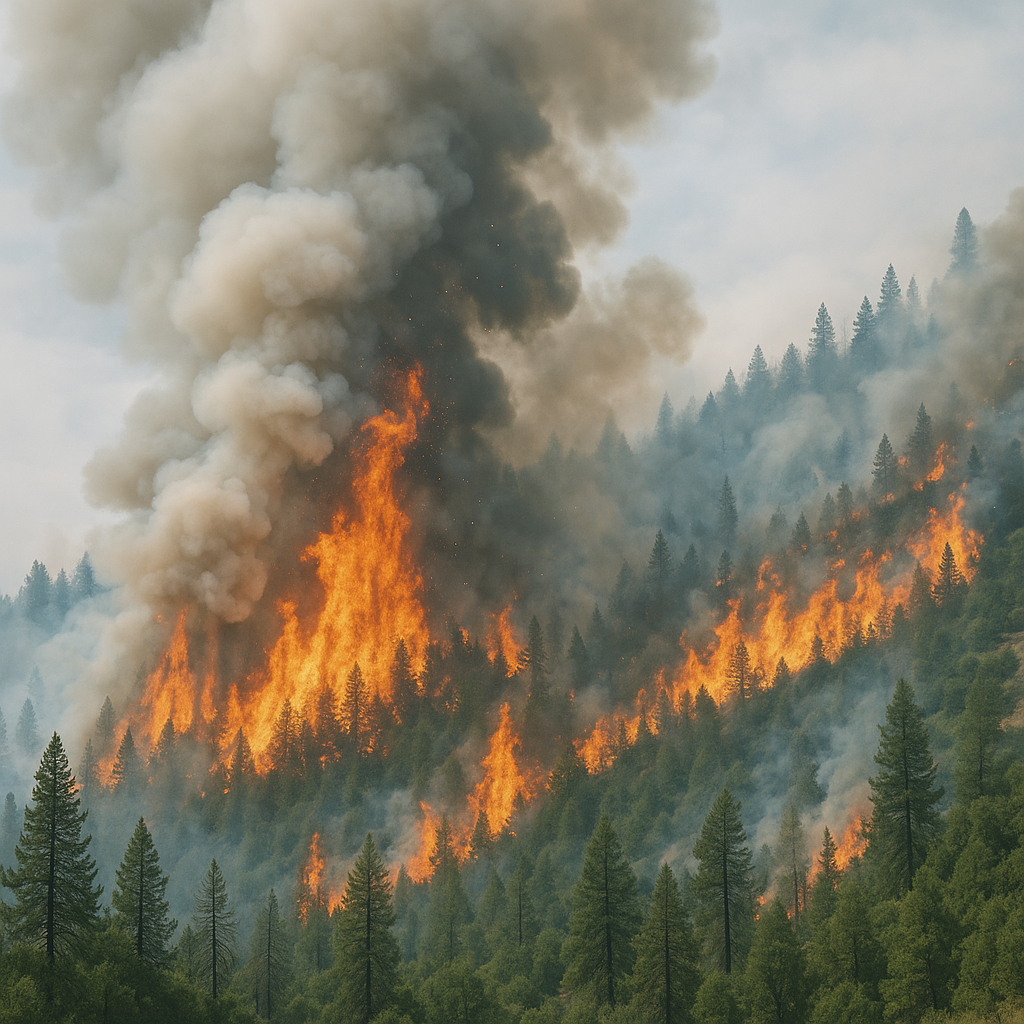
Dozer Plowing and Chaining
Once the backbone of large-scale fuel reduction, dozer plowing involves using heavy bulldozers to scrape wide firebreaks into the landscape. Chaining is where two dozers drag a massive anchor chain between them to rip down vegetation and was once widely used across the American West.
| Pros | Cons |
|---|---|
| Extremely fast – hundreds of acres can be cleared per day | Severe ecological impact – destroys root systems, topsoil, and habitats |
| Immediate firebreaks – creates wide bare-earth barriers that stop advancing flames | High erosion risk – bare ground quickly washes out in rain, damaging watersheds |
| Low equipment barrier – uses machinery already in most agencies’ fleets | Short-lived results – disturbed areas often re-grow with invasive species and become higher-risk over time |
Dozer plowing and chaining may be fast, but their environmental footprint has largely relegated them to emergency or last-resort use.
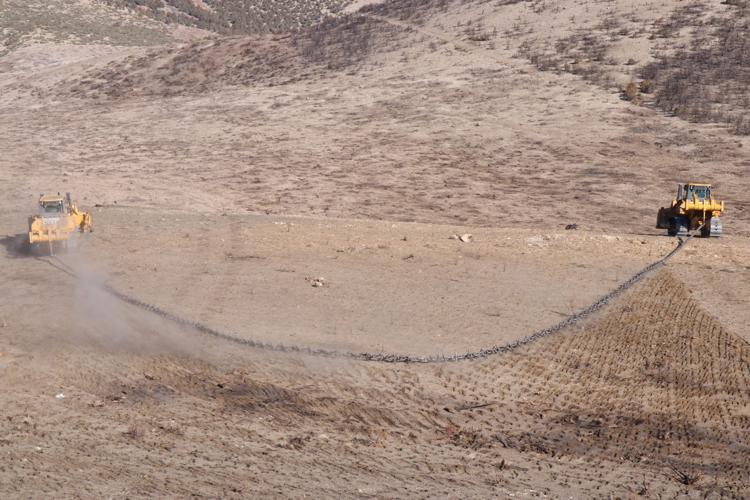
Controlled Burns
Prescribed or “controlled” burns replicate nature’s way of clearing built-up fuels. When conditions are just right, they can reset overgrown forests and grasslands.
| Pros | Cons |
|---|---|
| Restores ecological balance – fire stimulates many native plants to regenerate | Unpredictable – weather changes can quickly turn a controlled burn into a wildfire |
| Reduces fuel loads naturally – destroys dead brush and fine fuels that ignite easily | Smoke management – creates significant air quality and public health concerns |
| Low machinery cost – uses existing fire teams and minimal equipment | Timing challenges – only possible during narrow seasonal windows with ideal humidity and wind |
| Slow to deploy – requires extensive planning, approvals, and coordination |
Controlled burns remain valuable but limited. The precision required and environmental conditions needed make them more of a supplement than a primary strategy.
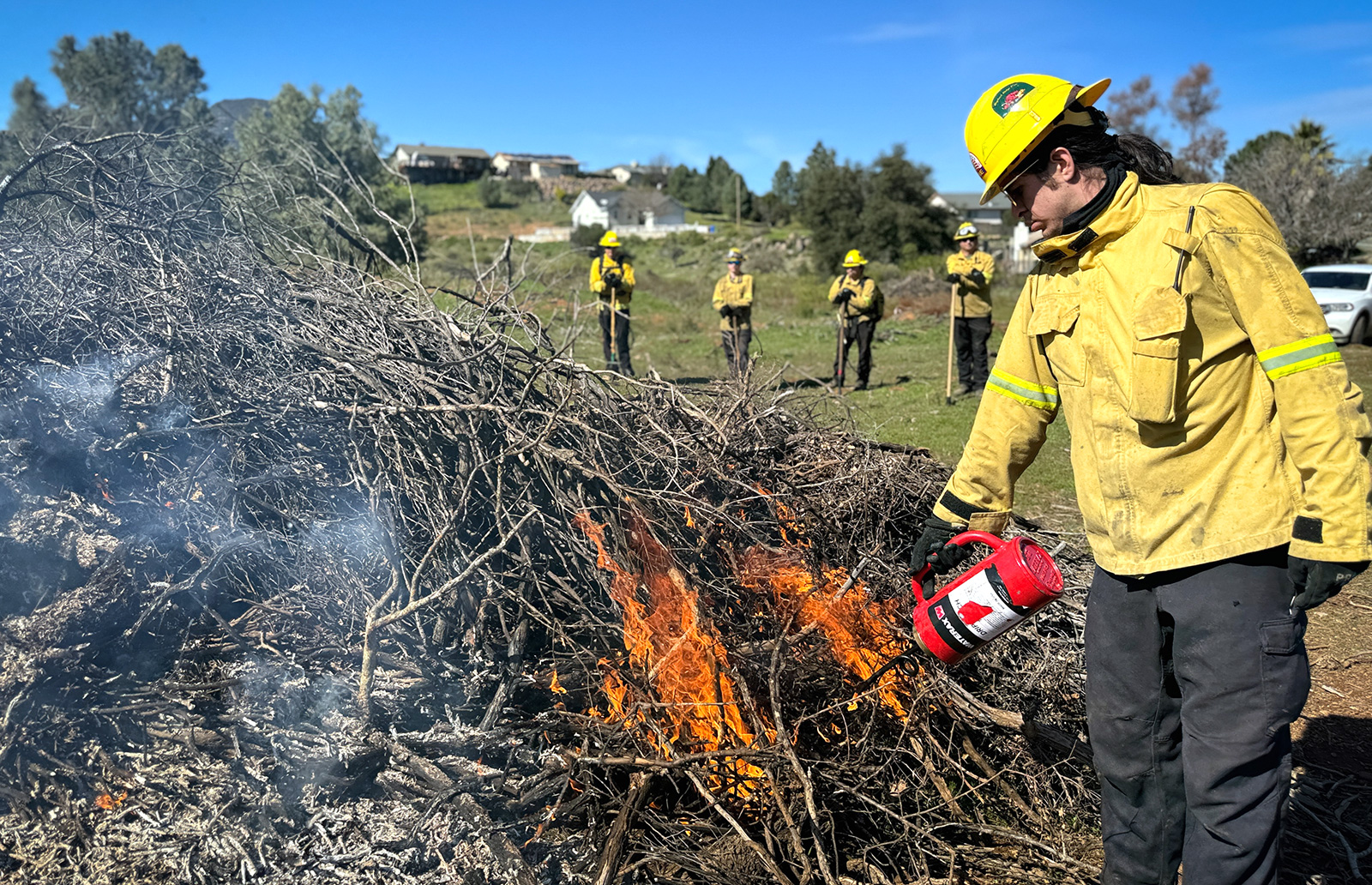
Hand Crews
Hand crews are often the unsung heroes of wildfire management. Teams of workers manually cutting brush, thinning trees, and building fire lines.
| Pros | Cons |
|---|---|
| Precision work – allows selective removal of fuels while preserving desirable vegetation | Slowest method – a full crew may only treat a few acres per day |
| Minimal environmental disturbance – leaves soil intact and natural cover in place | Extremely costly – labor, safety, and logistics make it expensive at scale |
| Essential for sensitive zones – ideal around infrastructure, recreation areas, and wildlife habitats | Limited scalability – impractical for remote or large tracts of land |
Hand crews are indispensable for finishing work and high-value areas, but they’re far too slow for the challenges agencies face today for long term prevention.
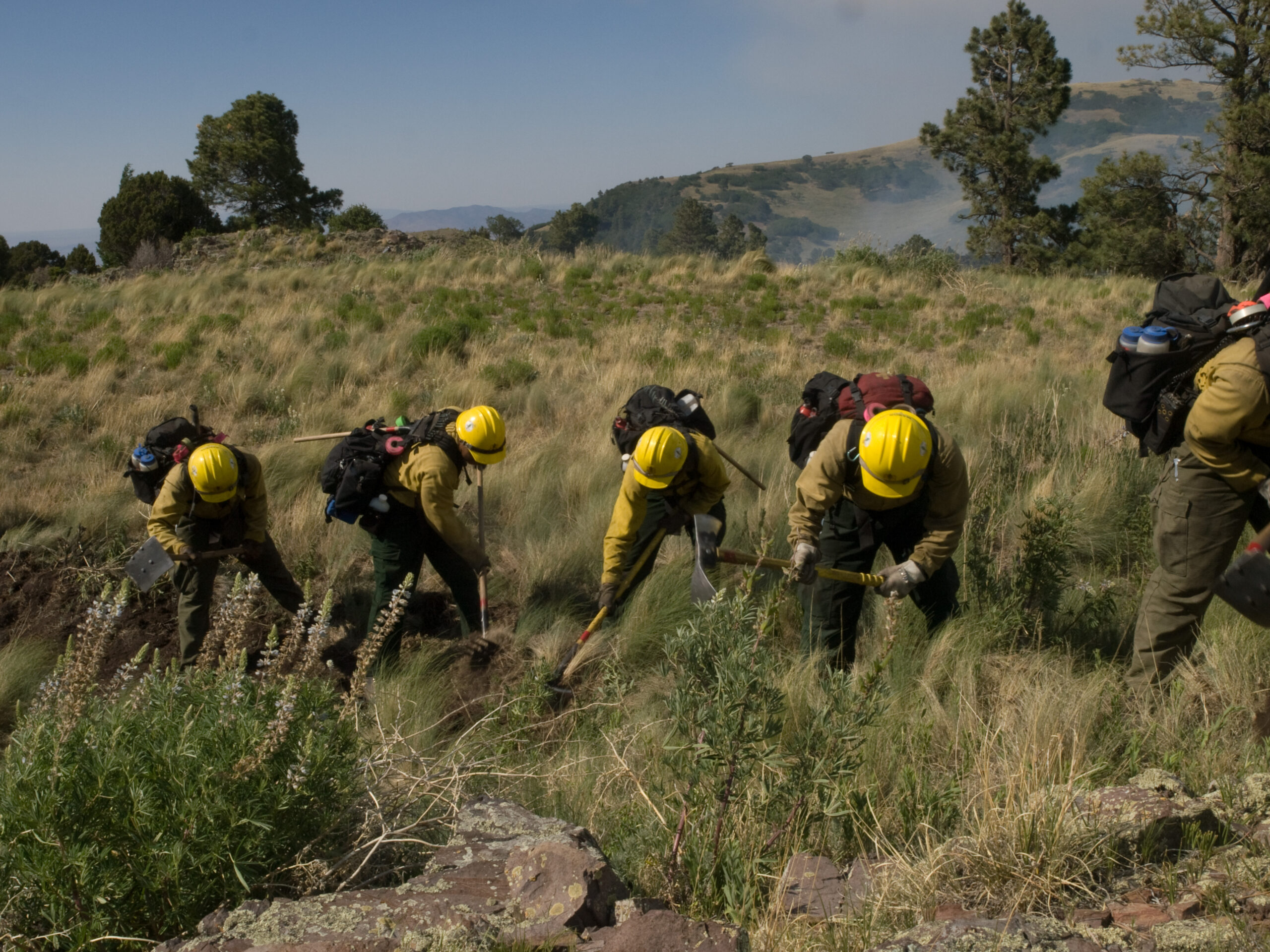
Mastication / Mulching
Mechanical mastication, often performed with dedicated forestry mulchers or excavator-mounted heads is becoming the modern standard in wildfire mitigation. Instead of burning or uprooting vegetation, mastication grinds it into mulch and redistributes it across the ground.
| Pros | Cons |
|---|---|
| Highly productive – skilled operators can clear up to 10 acres per day depending on terrain | Upfront cost – machines are expensive and require specialized maintenance |
| Year-round operation – can work outside of burn windows and in varied weather | Operator skill matters – poor technique can leave uneven fuel distribution or cause costly equipment damage |
| Soil-friendly – keeps roots and topsoil in place, dramatically reducing erosion | Terrain limits – extremely steep or rocky slopes may be inaccessible |
| Nutrient recycling – mulched biomass decomposes to enrich the soil | |
| Immediate access – opens terrain for firefighting, maintenance, or reforestation | |
| Safe and clean – no smoke, no fire, and no community disruption |
Mastication strikes the ideal balance – fast, efficient, and environmentally restorative. It’s now the preferred method in national forests, utility right-of-ways, and government fuel reduction programs across the U.S., Canada, and Europe.
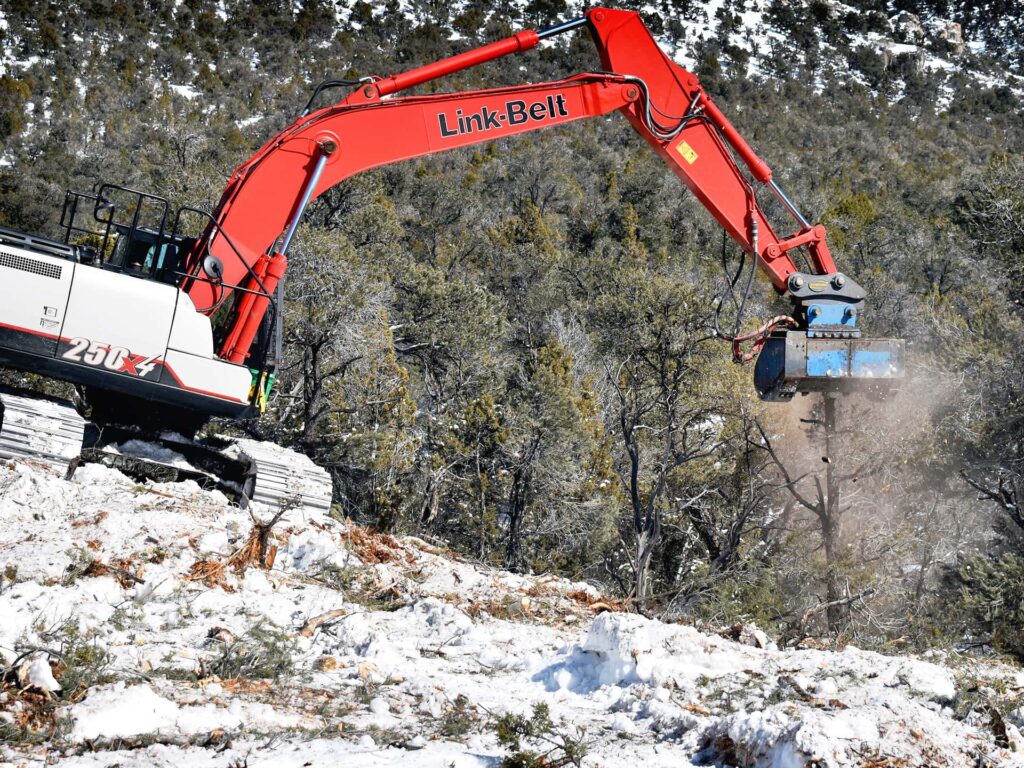
Equipment Spotlight: Promac R-Series Disc Masticator
At the forefront of this movement is the Promac R-Series Disc Masticator, the leading excavator-mounted masticator for serious operators who need to get out there and work with no downtime. Built to handle the most demanding conditions the R Series is engineered for reliability, simplicity, and brute strength. The R-Series has been around since 1978, and that first generation of R-Series masticators are still out in the field, doing the hard work.
Its heavy-duty disc design chews through dense brush, saplings, and large trees with ease, producing a clean mulch layer that improves soil health while reducing future fire risk. The R-Series is renowned for its no-nonsense build quality, with high-grade steel, precision welding, and proven hydraulic systems that lead the industry in uptime.
When time and performance matter, professionals turn to Promac. For agencies and contractors tackling large-scale mitigation, the R-Series Disc Masticator is the tool that defines modern wildfire control. Durable, efficient, and built for real work.
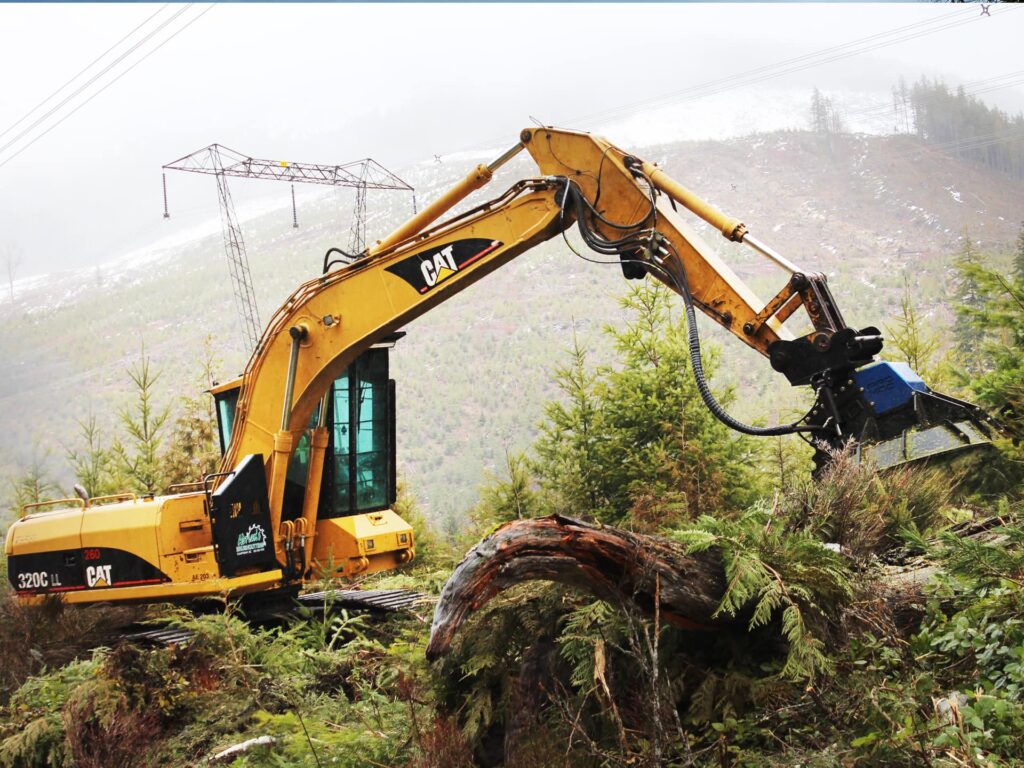
Conclusion
Every wildfire prevention technique has its place. Dozer plowing and chaining win on speed but lose on sustainability. Controlled burns balance ecology with risk. Hand crews deliver unmatched precision at a high cost. Mastication, however, delivers all three. Speed, control, and ecological balance – making it the cornerstone of modern wildfire mitigation.
As wildfire threats continue to grow, one fact is clear: mechanical mulching leads the way, and the Promac R-Series Disc Masticator is helping operators, agencies, and contractors meet that challenge, arces at a time.
